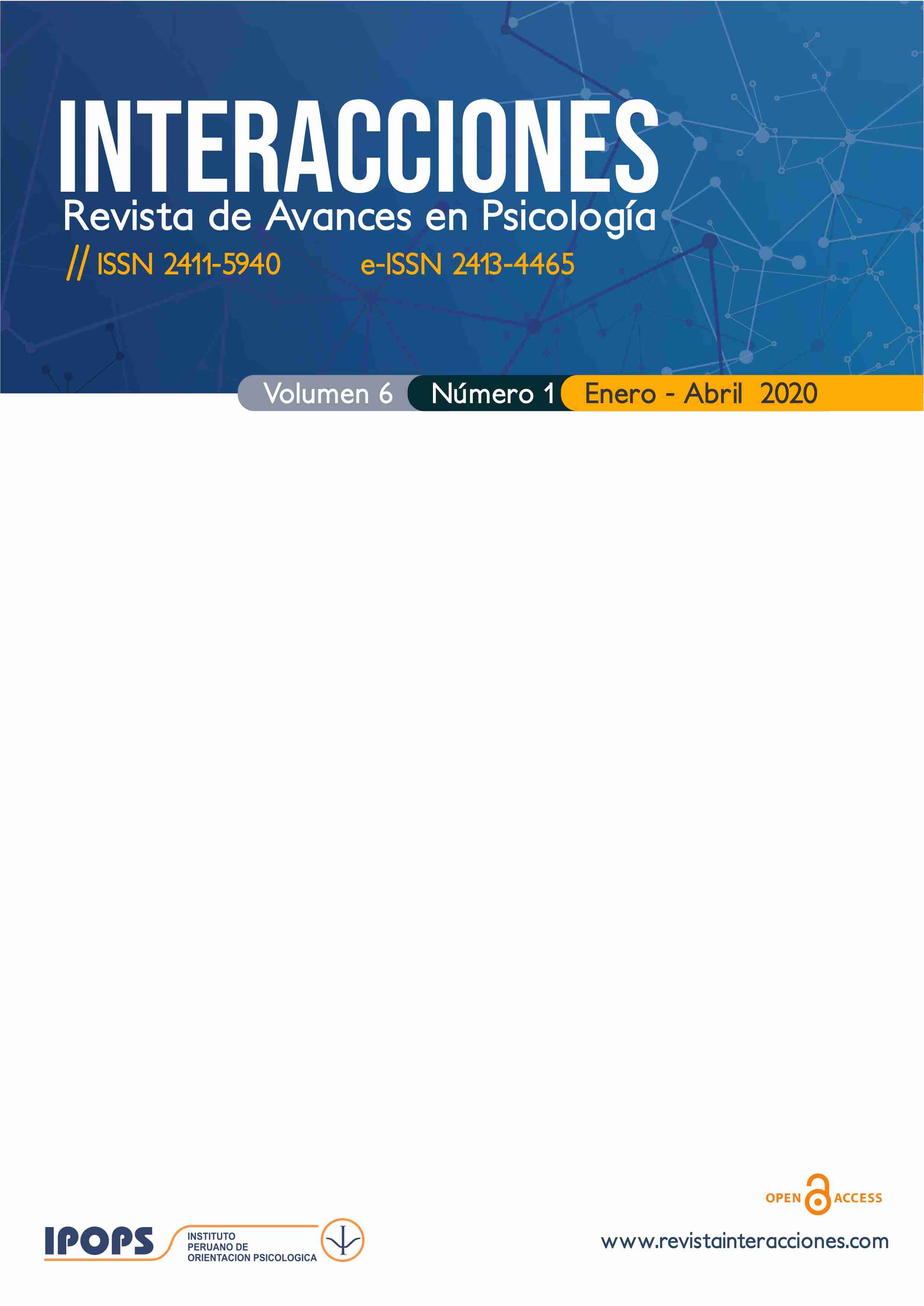Agency experience in children with typical development and children with autistic spectrum disorder
Abstract
Background: The Agency is capable of changing the own perceptual inputs at will (Russell, 1996;) 2000).The hypothesis of this work is that - according to Russell-, this would be altered in subjects with autism and that, on the other hand, it strengthens in critical periods of development (3 and 4 years old). Method: Assessed skills associated with the agency: monitoring of action, recognition of the Agency, instigation, the ability to correct errors on the fly and central inhibition, in children typical development of different ages, and children with and without autism using unpublished tests. Results: The differences due to age are found in the tests that evaluate the monitoring of an action plan, the recognition of the agency, the central inhibition and instigation, as well as the amount of mistakes made and the ability to correct them on the march. The differences between children with and without autism were found in the monitoring, instigation and ability to correct errors. Conclusion: These results show a progressive development of skills associated with the agency. In three-year-old children there are still difficulties in monitoring, instigating and inhibiting actions and in the recognition of the agency itself: skills that improve the following year and stabilize after 6 years. In children with autism, we found that the performance was different according to the clinical subtype, and that although there were alterations in the monitoring and instigation of the action (and according to the subtype, there were also differences in the control and correction of the error), they did not present difficulties in recognizing agency and central inhibition: central skills that are central to the management and control of one's own behavior as agents.
Downloads
References
Cooper, R. A., Plaisted-Grant, K. C., Baron-Cohen, S., & Simons, J. S. (2016). Reality monitoring and metamemory in adults with autism spectrum conditions.Journal of Autism and Developmental Disorders,46(6), 2186-2198. doi: https://doi.org/10.1007/s10803-016-2749-x
De Vignemont, F., & Fourneret, P. (2004). The sense of agency: A philosophical and empirical review of the “Who” system.Consciousness and Cognition, 13(1), 1-19. doi: https://doi.org/10.1016/S1053-8100(03)00022-9
Gallagher, S. (2000). Philosophical conceptions of the self: implications for cognitive science.Trends in Cognitive Sciences,4(1), 14-21. doi: https://doi.org/10.1016/S1364-6613(99)01417-5.
Grainger, C., Williams, D. M., & Lind, S. E. (2014). Online action monitoring and memory for self-performed actions in autism spectrum disorder.Journal of Autism and Developmental Disorders, 44(5), 1193-1206. doi: https://doi.org/10.1007/s10803-013-1987-4.
Moore, J. W., & Obhi, S. S. (2012). Intentional binding and the sense of agency: a review.Consciousness and Cognition, 21,(1), 546-561. doi: https://doi.org/10.1016/j.concog.2011.12.002
Pacherie, E. (2008). The phenomenology of action: A conceptual framework.Cognition, 107(1), 179-217. doi: https://doi.org/10.1016/j.cognition.2007.09.003
Pichot, P. (1995a).DSM-IV: Manual diagnóstico y estadístico de los trastornos mentales . Barcelona: Masson, S.A.
Russell, J. (1996).Agency: its role in mental development .Hove, East Sussex, UK: Erlbaum (UK) Taylor & Francis.
Russell, J. (2000).El autismo como trastorno de la funcio´n ejecutiva .Madrid: Editorial Me´dica Panamericana.
Sperduti, M., Pieron, M., Leboyer, M., & Zalla, T. (2014). Altered pre-reflective sense of agency in autism spectrum disorders as revealed by reduced intentional binding.Journal of Autism and Developmental Disorders, 44(2), 343-352. doi: https://doi.org/10.1007/s10803-013-1891-y.
Synofzik, M., Vosgerau, G., & Newen, A. (2008). I move, therefore I am: a new theoretical framework to investigate agency and ownership.Consciousness and Cognition, 17(2), 411-424. doi: https://doi.org/10.1016/j.concog.2008.03.008.
Copyright (c) 2020 Interacciones

This work is licensed under a Creative Commons Attribution 4.0 International License.
The authors retain the copyright and give the journal the right of the first publication and that they can edit it, reproduce it, distribute it, exhibit it and communicate it in the country and abroad through printed and digital media.
The digital version of the journal is registered under a Creative Commons license (Under Creative Commons License): Attribution 4.0 International (CC BY 4.0). Therefore, this work can be reproduced, distributed and publicly communicated in digital format, provided that the names of the authors and Interacciones.
Therefore, it is established that authors can make other independent and additional behavioural agreements for the non-exclusive distribution of the version of the article published in this journal (eg, include it in institutional repositories or publish it in a book) as long as it is clearly indicated that the work was published for the first time in this journal.




















